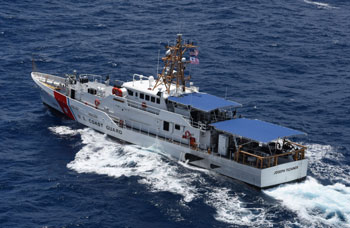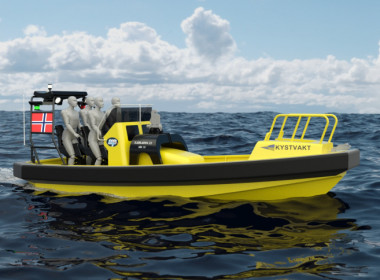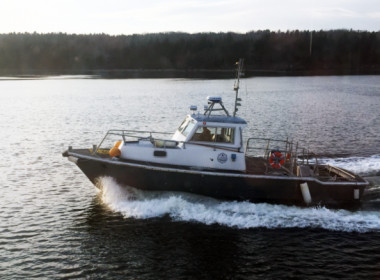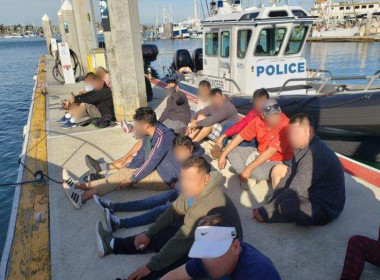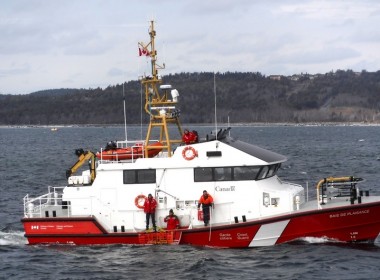FEATURE | US Coast Guard launches low-cost maritime domain awareness study

The US Coast Guard’s Research and Development Center (RDC) recently began conducting a month-long evaluation of unmanned surface vehicles (USV) and their ability to provide persistent maritime domain awareness in remote areas of the ocean.
This evaluation is utilising contractor-owned, contractor-operated autonomous ship systems by Saildrone and Spatial Integration Systems (SIS), as well as the RDC’s autonomous research vessel produced by Boston-based autonomous technology developer Sea Machines and Louisiana-based shipbuilder Metal Shark.
The focus of the evaluation is to determine if USVs can detect ships in an assigned patrol area and provide actionable data.
This evaluation was conducted off the south shore of Oahu from October 7 to November 5 as part of the Low Cost Maritime Domain Awareness Pilot Study.
“This is an exciting opportunity for the coast guard to evaluate the state of the market in unmanned surface vehicle technology. Unmanned technology and sensors are a force multiplier we can leverage to alleviate the constraints of limited assets and people to surveil large areas of open ocean,” said Captain Daniel P. Keane, RDC commanding officer.
“Knowledge gained from this study will better inform our future tactics and strategies to execute several coast guard missions, including protecting critical natural living marine resources from illegal, unreported and unregulated fishing.”
New technology for combating illegal fishing
While USV technology is potentially applicable to a broad scope of coast guard law enforcement missions, the primary focus of this evaluation is its ability to combat illegal, unreported and unregulated (IUU) fishing.
“The RDC met with Coast Guard Pacific Area and District 14 to discuss requirements needed to successfully evaluate this technology from an operational standpoint,” said Scot Tripp, program manager. “One of their major concerns in this region is detection of IUU fishing, which accounts for billions of dollars lost annually in the global fishing industry.”
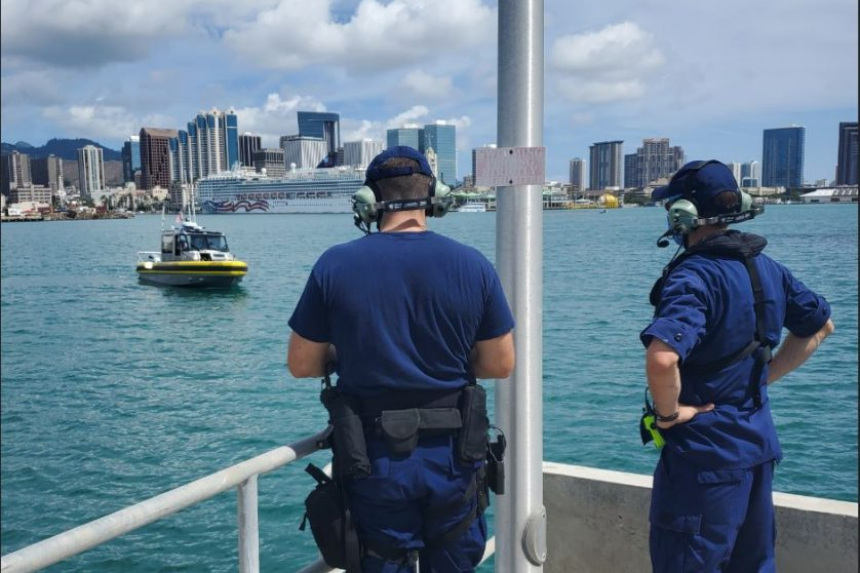
Another concern was a lack of actionable data available to their operators, Tripp added.
USVs potentially have the ability to provide insight that could lead operational decision makers to act.
The Saildrone is a 7-meter autonomous wind-powered vessel and SIS Watcher is a seven-metre inboard diesel-powered vessel. In addition to their ability to provide maritime domain awareness through sensor performance and communication, operational functions such as launch and recovery, endurance (30 days) and maintenance will be evaluated.
Autonomous vessel demonstrates operational flexibility
The vessel developed by Sea Machines and Metal Shark meanwhile offers a full range of advanced capabilities, from transit autonomy and collaborative autonomy to collision avoidance and remote vessel monitoring.
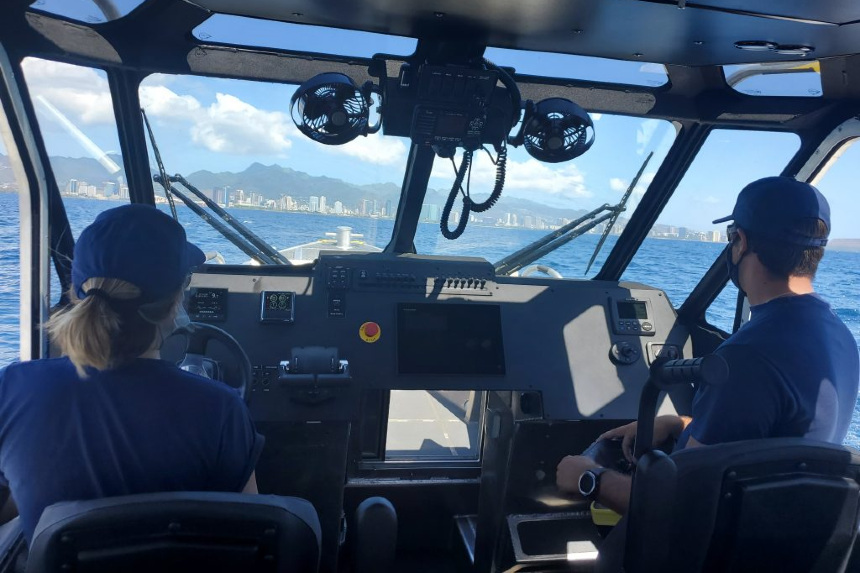
Whereas the other two USV systems in the demonstration were contractor-owned and -operated, the RDC purchased the Sea Machines/Metal Shark vessel in an effort to learn more about autonomous command and remote control, USV maintenance and current constraints through hands-on operations with actual coast guard operators.
The welded-aluminum monohull pilothouse vessel arrived in Hawaii prior to the event equipped with the Sea Machines’ proprietary autonomous-command and remote-helm control system.
RDC crew boarded the vessel and operated Sea Machines’ autonomous-command system in real-time on the water. Planned exercises included transit and grid autonomy missions, as well as an observance of the system’s obstacle detection and collision avoidance feature.
The system proved it could intelligently factor in environmental and sea conditions as well as autonomously change speeds between waypoints. Especially important to the USCG, the Sea Machines system enables optionally manned or autonomous-assist (reduced crew) modes that can reduce mission delays and maximise effort — a critical feature for time-sensitive operations, such as on-water search and rescue (SAR) or other urgent missions.
The USCG operators also donned Sea Machines’ wireless beltpack and remote-commanded the autonomous vessel from both inside the wheelhouse and from the shore. This exercise also allowed the test crew to use the beltpack controls to engage on-board payloads, including vessel sensors and other equipment.
The Sea Machines commercial wireless helm control system can be operated from a distance of one kilometre.
Following the event, the autonomous vessel was returned to the RDC’s New London facility for additional testing.
Continued development and testing in the pipeline
“The Coast Guard and its many partners will observe, recommend different test scenarios and evaluate the potential operational compatibility,” Tripp said.
Partners include the US Navy, the National Oceanic and Atmospheric Administration (NOAA), the Department of Homeland Security, US Customs and Border Protection, local port authorities and federal laboratories.
The RDC is conducting the operation in close coordination with local units.



